Driverless Operation System
Futuristic state of the art technology, DX LINE
- First domestic heavy rail transit
driverless operation system -
01 First domestic heavy rail transit driverless operation system
In a driverless operation system, trains run without a driver on board. Train operation and status is remotely controlled and adjusted from
the OCC based on the two-way Radio Frequency-Communication Based Train Control (CBTC). This high-end system can minimizes faults
and operation delays through securing redundant systems and automatic route change functions. This operation system also ensures
safety through minimizing human error, which accounts for the largest portion out of the cause of railway accidents□ Principles of driverless operation system : Bi-directional Communication System (CBTC)
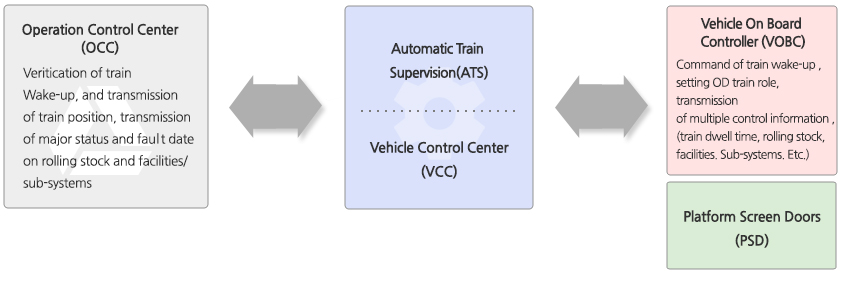
□ Adoption of overseas advanced operation technology
Driverless operation system is universalized and operated over 100 transit lines around the world, and Shinbundang DX Line.
It has established firmly stabilized systems through identifying the pros and cons in overseas operation cases in order to ensure reliability
of the driverless transit system□ Overseas driverless operation systems
Heavy rail transit systems
Heavy rail transit systems table Country City Transit Line Korea Seoul-
GyeonggiDX LINE France Paris Line 1, 14 Singapore Singapore North-East Line, Circle Line Germany Nurnberg Line U2, U3 UAE Dubai Metro(Green, Red) Spain Barcelona L9, L10, L11 China Hong Kong Diseneyland Resort Line Brazil São Paulo Line 4(Yellow) * DX Line is 5th in the world, 2nd in Asia of driverless heavy rail
transit system.* 5th simultaneous operation company of driverless HRT & LRT
in the world.Light rail transit systems
Light rail transit systems table Country City Transit Line Korea Busan Line 4, Busan-Gimhae Uijeongbu Uijeongbu
Light Rail TransitYongin EverLine France Paris/Lyon Line 1, 14 Japan Tokyo/Nagoya Yurikamome Line/Lina
Mo LineSwiss Lausanne Line M2 U.S.A. Miami/Las Vegas Metromover/Monorail Detroit LIM Taiwan Tai Pei Mucha Line(VAL) China Hong Kong MTR - Strengths of a driverless
operation systems -
Strengths of driverless operation systems
Train operation of Shinbundang DX Line is automated by pre-arranged programs, and is committed to providing safe and faster
transport service for passengers via OCC equipped with cutting-edge technology and facilities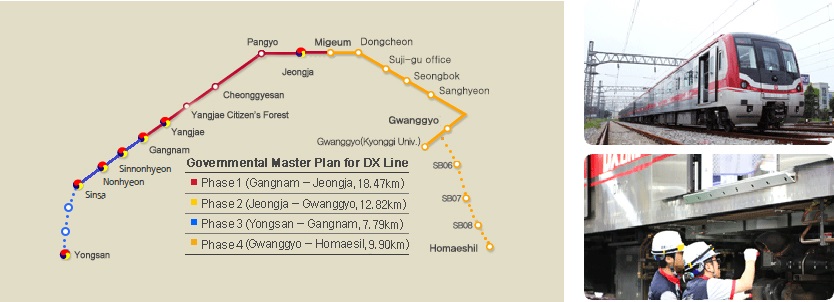
□ Human Factor
Decrease of safety accidents incurred by human error
Efficiency of personnel work (Multi-Function)□ Technology & Facilities
Observation of external view from inside the train
Reduction in energy consumption
Decrease of maintenance cost due to high reliability and maintenance of all types’ kinds of parts
(cost reduction in terms of wear and tear loss)□ Technology & Facilities
Efficiency due to consistent operation
Less congestion due to maximum train operation during revenue operation hours
Prompt switch-over of a leading cab during train turn-back
(Multifunctional personnel reduction cost in the long run)
Flexible Train operation - Safety of Driverless Operation
-
Safety of Driverless Operation
At the initial phase after the line opening, a safety staff (CSO) with a train driver license is deployed on each train in order to address
possible anxiety of passengers and immediately deal with any train faults, and drive manually in an emergency. The driverless operation
system of DX Line, which places its first priority on the safety of customers, prevents accidents caused from human error and guarantees
to carry passengers in scientific and safe manner via remote control from the OCC□ Safety enhancement and Relief of passenger' anxiety
-
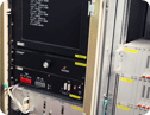
Establishment of redundant safety back-up system for major equipment
- - Prevention of situation where a train stops in the tunnel between stations
- - Train Control Monitoring System (TCMS), braking system, Public Address (PA)/Passenger
Information System (PIS), door control, Static Inverter System (SIV), etc - - Recording of operation status of on-board equipment and systems, automatic control and recovery,
Self-diagnosis function
-
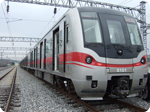
Remote control function from OCC
- - Transmission of on-board equipment operation and train status information
- - Real-time monitoring and remote control function
(automatic implementation such as train operation, turn-back, stabling) - - Direct Broadcasting of public announcements
-
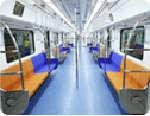
Safety devices
- - Platform: PSD, transmission of operation information via an on-board video phone
- - Train inside: Emergency exit end door, fire detector, CCTV, emergency interphone, etc
- - Detection of obstacles on tracks and train derailment s
-
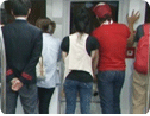
Safety staff(CSO) on-board
- - Deployment of safety staff (CSO) with a train driver license on each trainset
- - Emergency response to any train failure and manual driving of a train
- - Customer services, such as customer guidance, controlling of illegal and unlicensed vendors
□ Actions in the event of operation failure
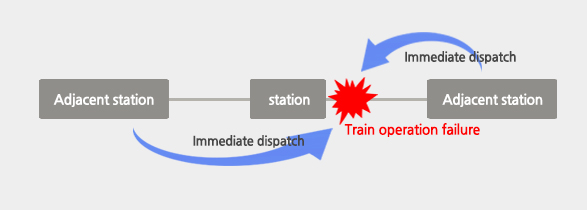
- Establishment of Emergency transportation tools and systems for dispatch to an incident site at every station
- - Prompt activation from every station to a section with a train operation failure
- Deployment of professional CSO (Driver license holder)
- - Manual operation of a train in an emergency
- - Supervision of train operation status and provision of customer service activities
- - Initial response to any train operation failure
- Operation of mobile maintenance team
- - First line maintenance in case of failure
□ Establishment of safe operation management system
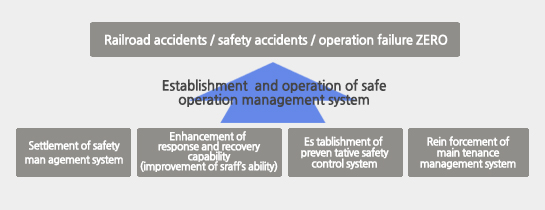
Pursuit of optimal customer's safety through integrating and systematically managing such functions as train safety, punctual train
operation, and safety management of customers in a station -